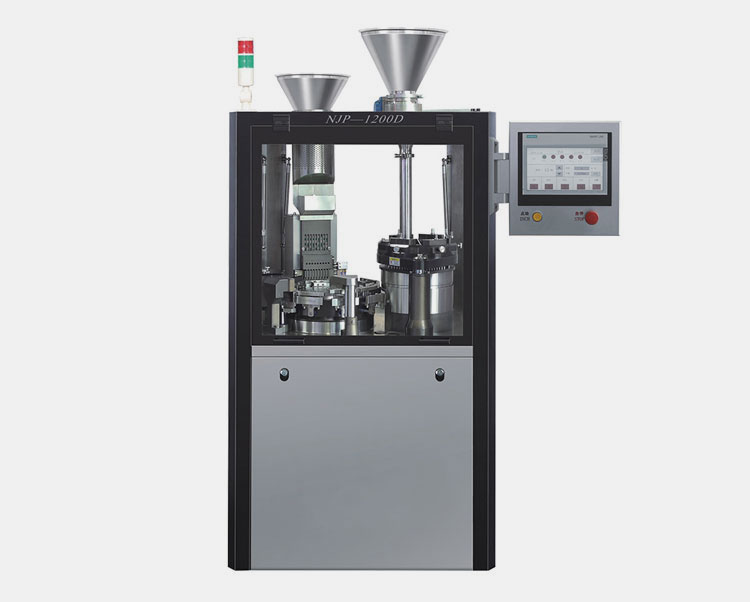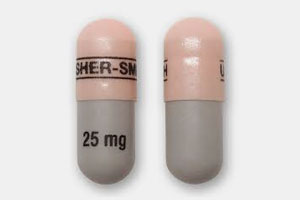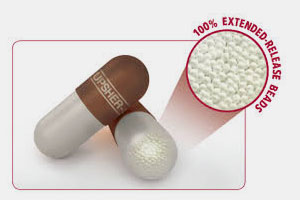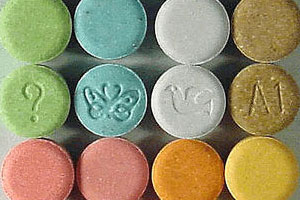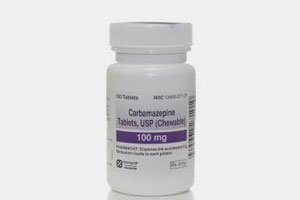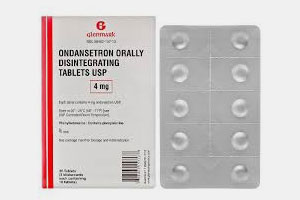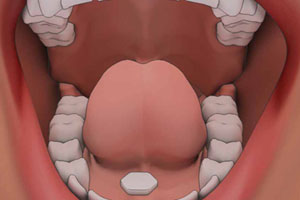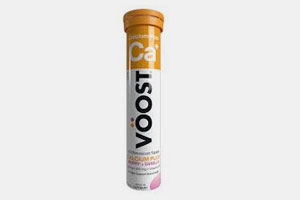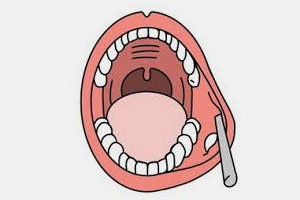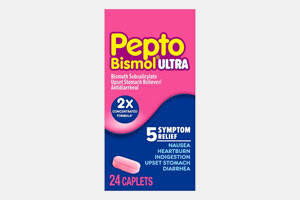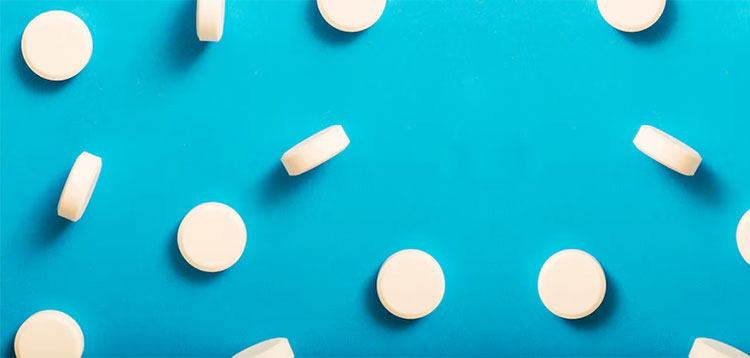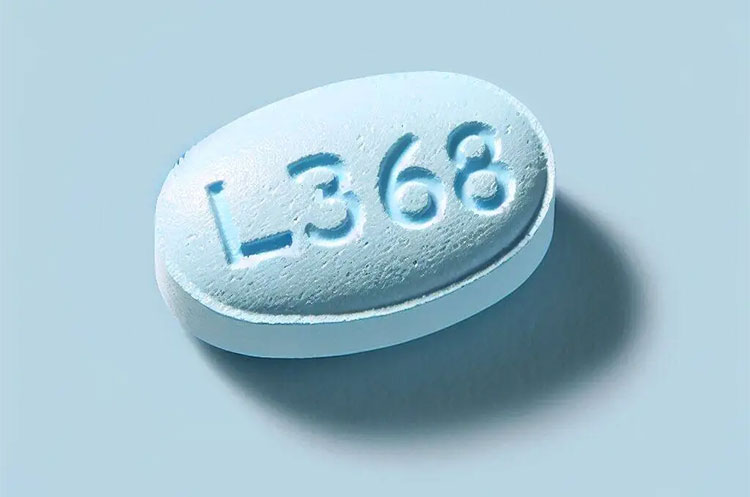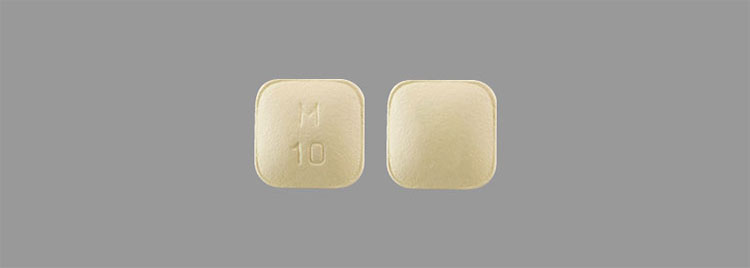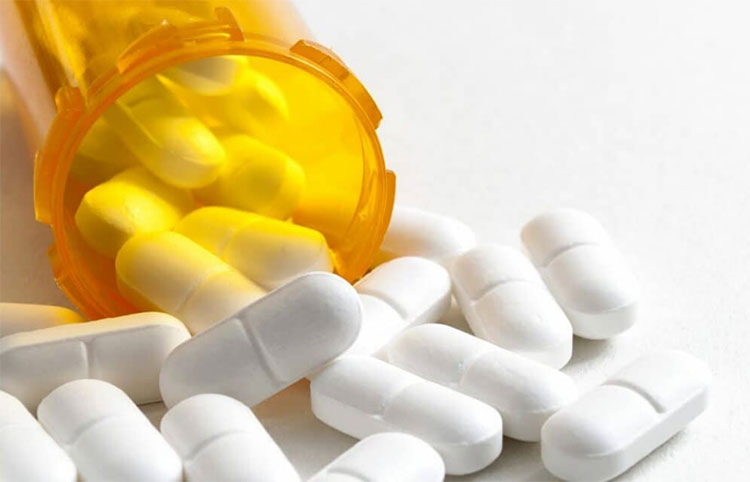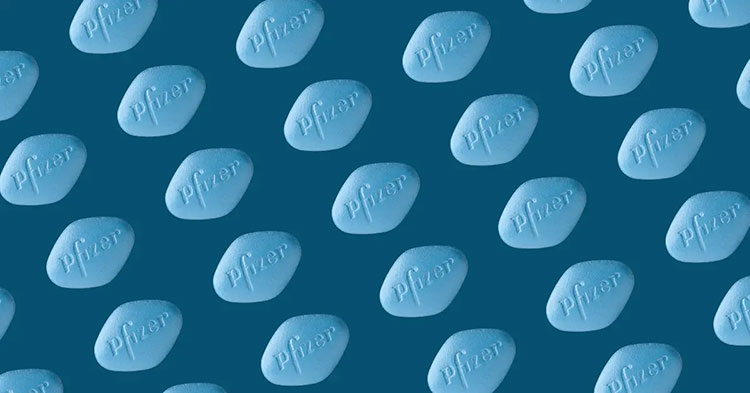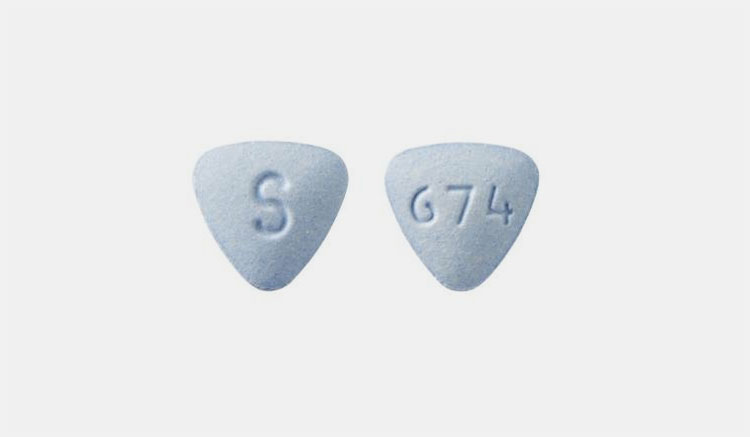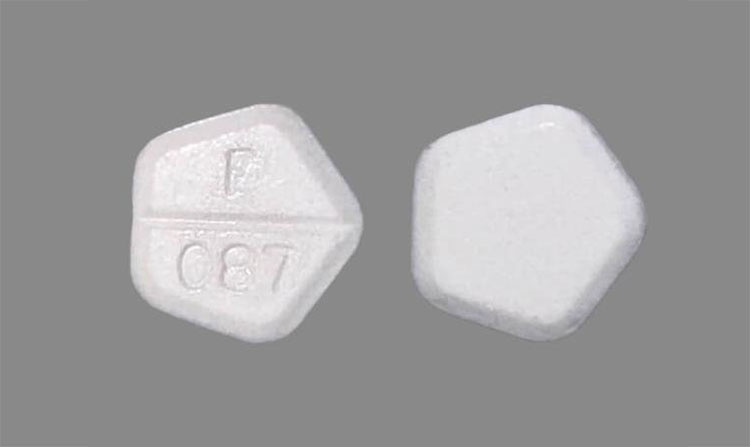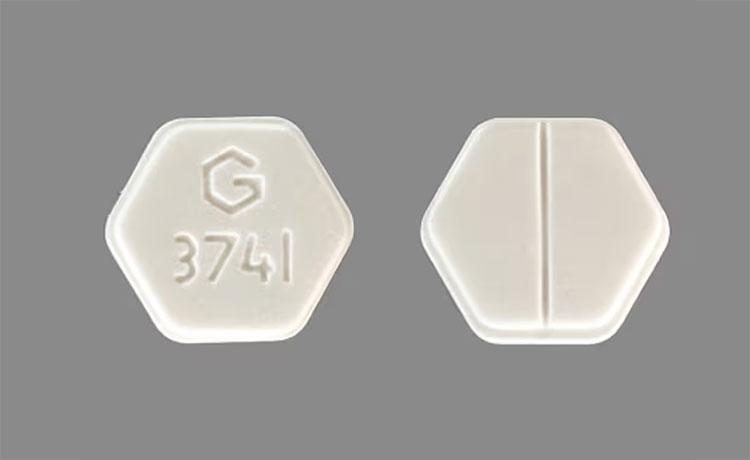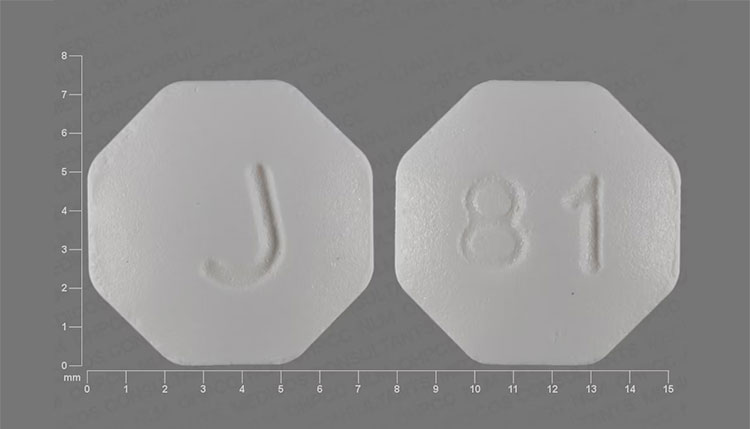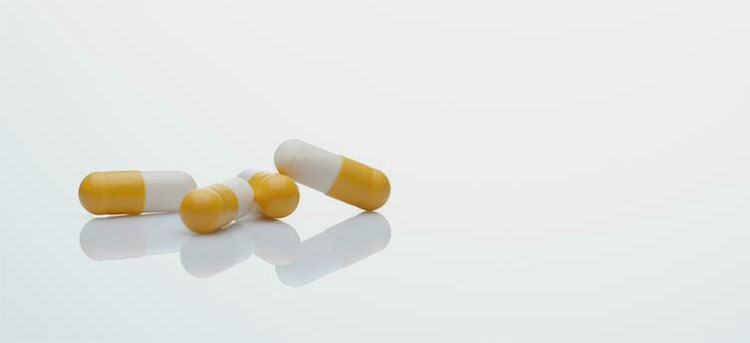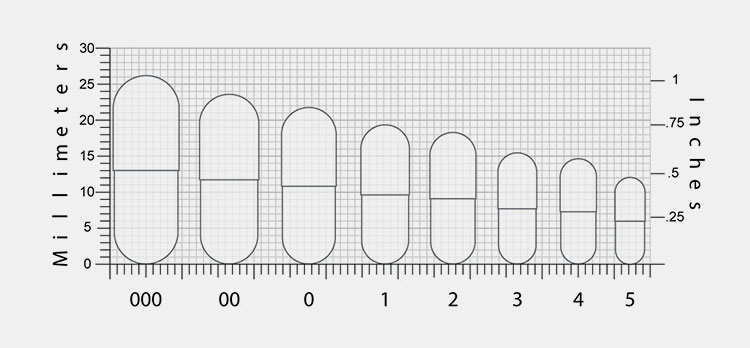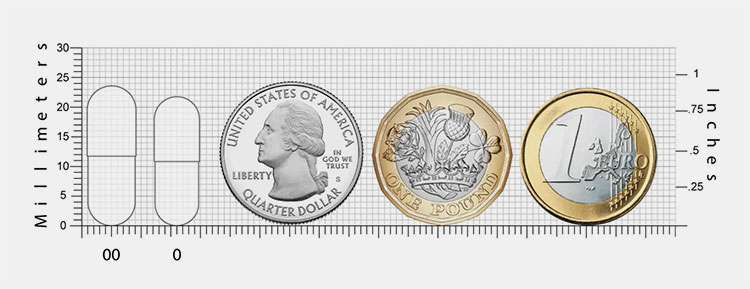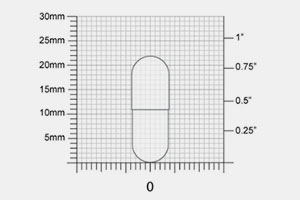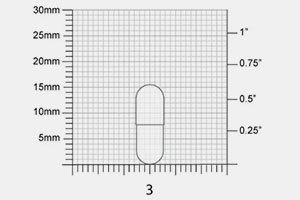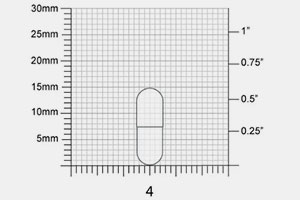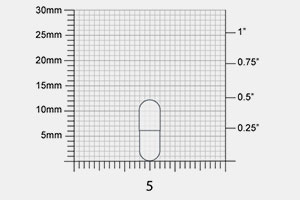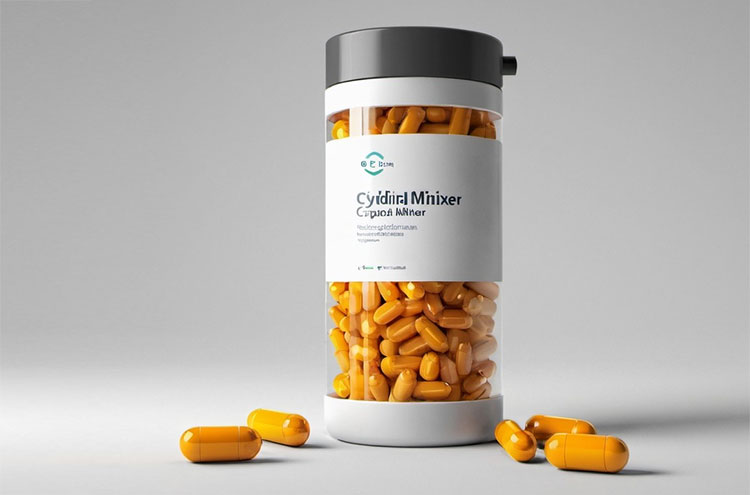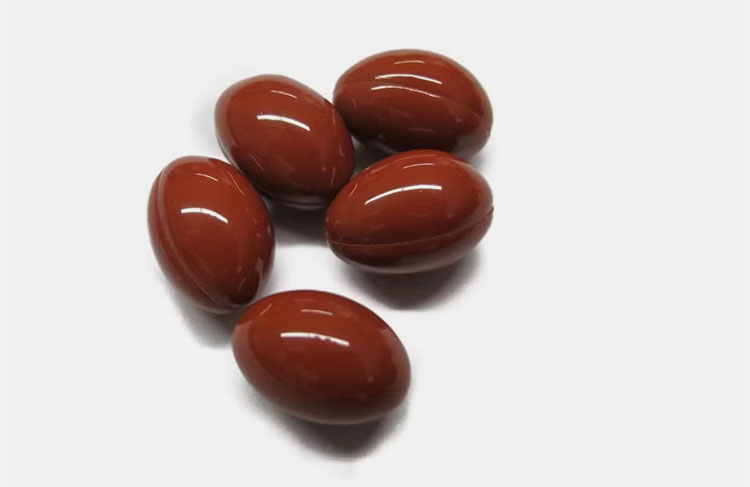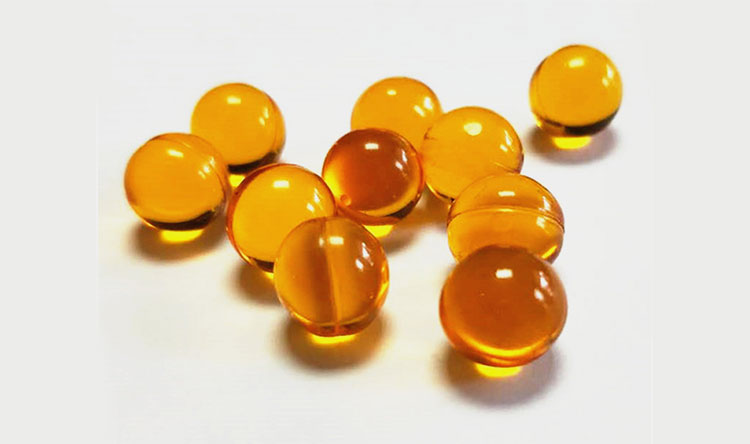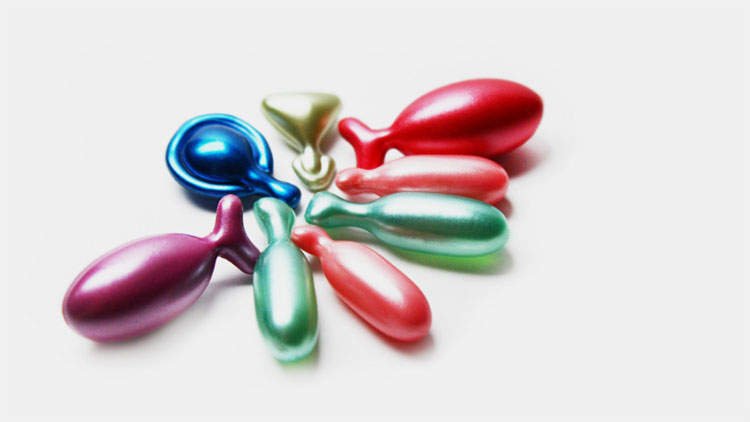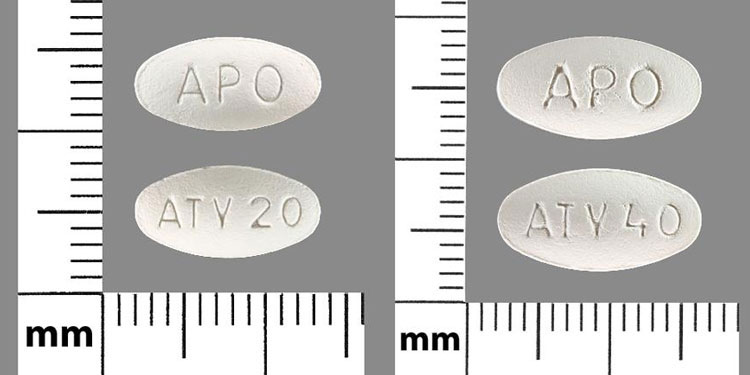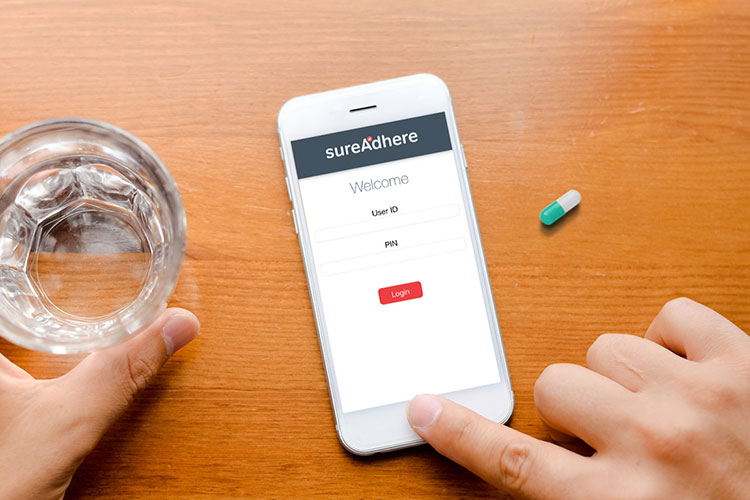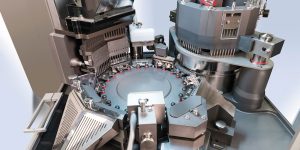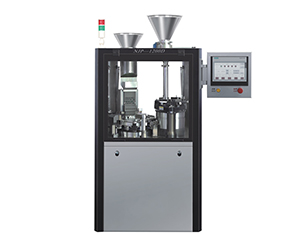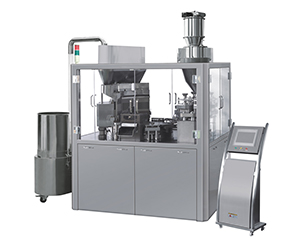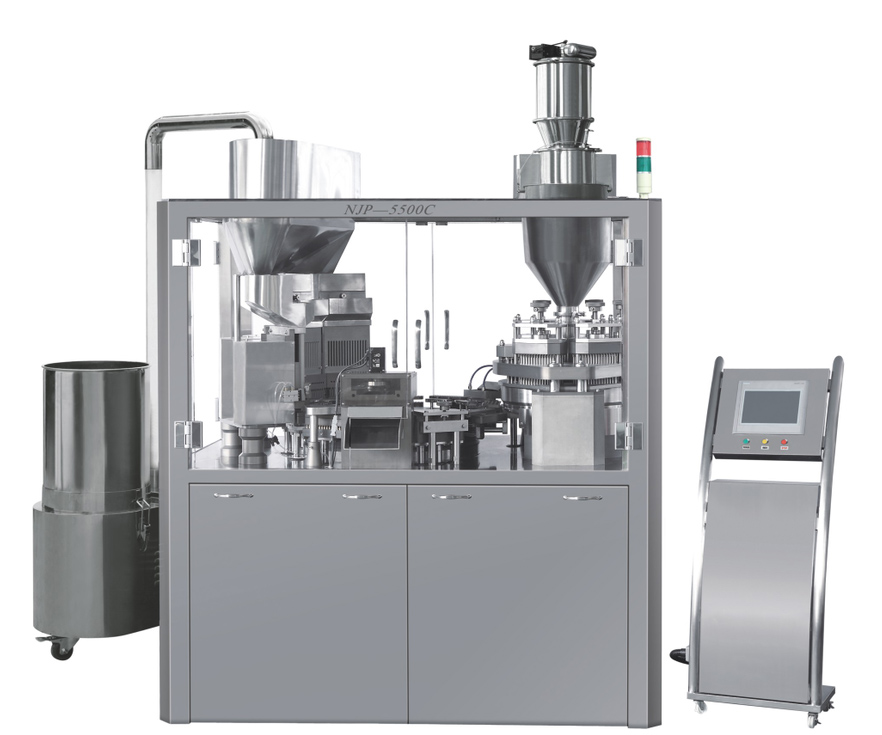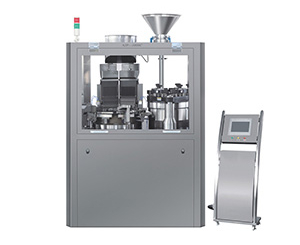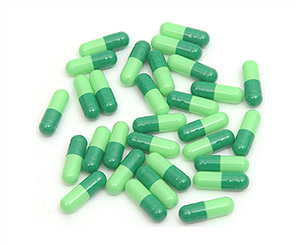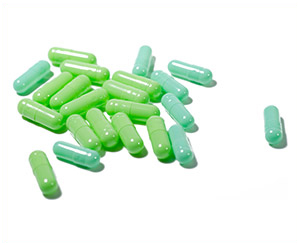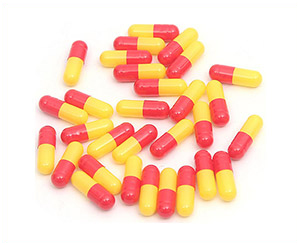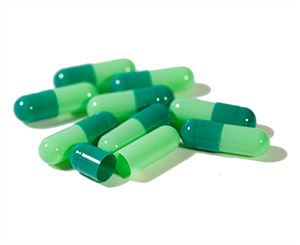Different Sizes and Shapes of Pills: What Do You Know
Do you pick a pill from its shape? If not, then many of you might be doing the same. Different sizes and shapes of pills make them distinguishable and unique. There are so many reasons behind assigning the sizes and shapes.
Similarly, if you are unable to swallow the big giant pill and it is essential for you thrice a day; what would be your option? I know, either you will break them into halves or refuse to take the medication. Every manufacturer assesses your requirements first, your health and safety are their prime priority. If you find our discussion interesting, then please be with us! The article on ‘Different Sizes and Shapes of Pills: What Do You Know’, is all about major points related to sizes and shapes. So be with us!
1.What are pills?

Pills
The pill is a traditional term generally known as ‘katapotia’ in ancient Greece where it was referred to as ‘swallow’. The word pill came from Roman scientist Pliny who termed it as ‘pilula’.
Ancient Egypt used their medicines to be swallowed by overlapping or covering them around the bread dough or sweet honey. In this way, its taste can be masked and accepted by the patient.
Pills are small solid dosage preparations and today it is presented with various types. They are now produced in a way where they can be dissolved in the intestine, buccal cavity, sublingual, etc.
Therefore, it acts as a good solution for individuals who have trouble taking medication. You should not be confused in understanding the difference, pills are generally a broad category of solid dosage formulation that refers to tablets, caplets, effervescent tablets, capsules, etc.
2.What are 10 types of different pills?
The pills are composed of broad series types. The described below are the 10 main types of pills that you must know.
| Name | Description | |
| 1 | Capsules
|
This is a type of oral solid dosage medication that is meant to be swallowed. It has the property to hold filling material inside the hard gelatin made up of animal-derived gel as well as plant-sourced materials.
This is available in two forms hard and soft gelatin, combinedly known as capsule pills. Examples of capsules are RISEK or omeprazole capsules etc that are used for digestive-related problems such as heartburn, GERD, etc. |
| 2 | Softgel capsule pill
|
They are flexible and capable of delivering the medication more rapidly into your bloodstream than hard gelatin capsule pills. Although, the shelf life of these capsules is lesser than hard gel. Generally, it is used for encapsulation oils, liquid supplements, etc. |
| 3 | Sprinkle capsules
|
The granules or pellets that are mostly available and manufactured in very small sizes are mostly encapsulated in hard gelatin capsules known as sprinkle capsules. These are used for individuals suffering from swallowing the pellets or granules pills.
For example, topiramate capsules pill. |
| 4 | Tablets
|
This is traditionally known as a pill and many people still consider them as a pill. They are formed by binding the powder with excipients by compression of the machine. They’re mainly formed by round shapes with multiple sizes which we have discussed below.
Examples of tablet pills are paracetamol, brufen, etc. |
| 5 | Chewable tablets pills
|
These pills are meant to be chewed and are capable of giving good therapeutic effects upon chewing the formulation. They are not allowed to swallow and are often prepared for age groups belonging to mature and children.
For example, Tegretol is an anti-seizure chewable pill. |
| 6 | Oral disintegrating tablets pills
|
An easy dissolvable tablet that starts disintegrating immediately upon placement in the oral cavity by the action of tongue secretion. They are mainly used for patients who are unable to swallow medication.
Example of oral disintegrating tablet pills are Zofran, Rimegepant, etc. |
| 7 | Sublingual tablets pills
|
These pills mainly work by placing them under the tongue and produce a fast action by dissolving by skipping the first pass effect.
These pills are capable of dissolving in a moist environment therefore consumed once immediately after taking them out from the packaging. For example, nitro-glycerine (Nitrostat) is used for heart-related pain and controlling high blood pressure. |
| 8 | Effervescent tablets pills
|
This pill dissolves by the action of water. This is considered a suitable option for those people who find difficulties with pill intake.
The effervescent pill generates fizz upon the action of water and produces good effects with a pleasant taste. Examples of effervescent pills are Cal C 1000+ which is an immune-supporting agent and more. |
| 9 | Buccal tablets pills
|
These pills work by positioning them between your cheeks and gums. Once it is placed, it works better and rapidly. The individuals who are unable to take medication such as unconscious or patients who require fast action are prescribed buccal tablets. For example: fentanyl (anti-cancer) acyclovir (antiviral), buccal pills. |
| 10 | Caplets pills
|
These pills look like capsules although manufactured as tablets with coating. As they are oblong in shape; therefore, it is easier to swallow. For example, naproxen (pain killer), or bismuth subsalicylates (anti-diarrhea). |
3.What are the different sizes and shapes of pills?
To talk about the different sizes and shapes of pills, we will explain the answer by mentioning each category separately. First, we will begin with tablet sizes;
Tablets
In pharmaceuticals, the tablets are composed of various sizes, weights, and shapes. Firstly, the sizes are described in this section, then you will find various shapes and ideas behind their implementation. There are various sizes approved in pharma tablet preparation and the best approved ranges are 1 mm to 22 mm.
Based on size, the tablets are categorized into the following:
The Large Size Tablets
| Large size Tablet | |
| Top View | 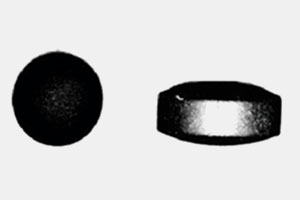 |
| Side view
Diameter= 11.95 mm Total Thickness= 5.5 mm Weight= 0.65 grams |
This is the largest size tablet which is mostly manufactured with a round shape. The noted size of the large tablets is around 8 mm or greater than the mentioned size.
The swallowing of the large tablets is somewhat observed as harder than standard or small size tablets. They mainly tend to stuck within the esophagus track making it easier for patients to accept them.
Standard-Size Tablets
| Standard or medium size Tablet | |
| Top View |  |
| Side view
Diameter= 8.8 mm Total Thickness= 4.65 mm Weight= 0.30 grams |
These tablets are designed with a diameter that should be between approximately eight to five millimeters. The standard size or regular size tablets are mostly small in size and allow better-swallowing properties to their patients than the larger size.
Moreover, when you’re making these tablets, you should also highlight the demographic factors; this is included with the age group, and the medicinal requirement to that particular region, etc.
In this size, the manufacturers also have the freedom to use various shapes, and colors to enhance the dosage formulation.
Mini Size Tablets
| Mini Size Tablet | |
| Top View | 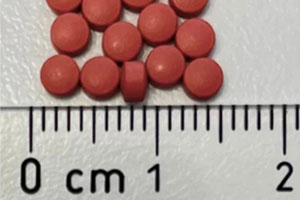 |
| Side view
Diameter= 0.85 mm Total Thickness= 4.17 mm Weight= 0.22 grams |
You must have seen small size tablets in your general routine. These are mostly designed with sizes less than 3 mm. Such sizes are introduced to support patient compliance as in research reports, the FDA notified that around 16 million patients in the US are facing challenges with tablet consumption.
Therefore, the sub-unit of conventional tablets the mini-size tablets are produced. They are known as more beneficial than regular and large tablets.
The below chart shows the dimensions used in tablets for pharmaceutical and nutraceutical preparations.
Oblong Sized Tablets
| Oblong Size Tablet | |
| Top View | 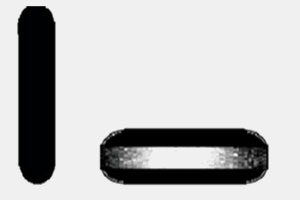 |
| Side view
Diameter= 18.01 mm Total Thickness= 6.15 mm Weight= 0.83 grams |
These tablets are the largest tablets, but due to their oblong shape, it is offering you easy swallowing. Various analgesics, supplements, and anti-depressants are designed with this size of tablets that facilitate the therapeutic effects and benefits.
Shapes of tablets
The shapes of the tablets are described below:
Round Tablet
Round tablets
This is the standard shape of the tablet and is still a popular structure as it gives high patient compliance and is easy to ingest. There are various medications i.e. prescription and over-the-counter tablets, available in the round shape tablets.
Oval tablets
Oval tablets- Picture courtesy: Gratitude Lodge
These are round tablets with a little bit of elongation and slightly high width. Many over the counter as well as prescription medications such as analgesics, antibiotics, and health related supplements are manufactured with oval shape structures with smooth edges. These tablets are oval and ensure patient compliance as it allows easy swallowing from your esophagus.
Square tablets
Square tablets- Picture courtesy: drug.com
The square shape tablets are very less presented in the market. However, they are mostly available as prescription tablets and indicated the specific indication. For example, the montelukast tablet is specifically presented with a square shape and is used to treat breathing problems such as asthma.
Oblong tablets
Caplets Or Oblong Tablets- Picture courtesy: Respiratory Therapy
These are also known as caplets. They are elongated and capsule-type in presentation and popular structures in the tablet manufacturing process. They are mainly coated with gelatin to mask the bitter taste of medicines. The availability of these tablets is mostly based on prescription.
Diamond shape tablets
Diamond shape tablets- Picture courtesy: ASC
This is seldom used in the shape of the tablet which is used for specialized indication of the health issue. They are prepared with various folds or edges, some are four-sided, while some are with six, etc., the Examples of diamond shape tablets are Viagra (anti-hypertensive), fluconazole (anti-fungal), etc.
Triangle shape tablets
Triangular shape tablets- Picture courtesy: drug.com
The three-sided tablet allows the flexible option to swallow easily. These are specialized-shaped tablets that are mainly used for certain conditions. For example, Nebivolol Hydrochloride 10 mg is used to treat heart or cardiac problems and regulate your blood pressure.
Pentagon shape tablets
Pentagon shape tablets- Picture courtesy: pill identifier
This shape tablet is designed with five edges and is used for particular diseases. You can't find them as over the counter. The scoring is also available on them so it allows you to break them if dose adjustments are required. For example, dexamethasone, which is a corticosteroid used for inflammation, lungs, joint related problems, needs a prescription prior to taking them.
Hexagon shape tablets
Hexagon shape tablets- picture courtesy: medicine.com
These are demonstrated with 6 side edges and are used for special treatments associated with the central nervous system, hypertension, and psychological treatments. Some of their examples include: haloperidol (anti psychosis), lamotrigine (anti-epileptic), and amlodipine (antihypertensive medication).
Octagon shape tablets
Octagon shape tablets- picture courtesy: medicine.com
These are the tablets with eight sides and smooth edges. They’re also not commonly available dosage forms instead certain ailments. For example, Amphetamine and Dextroamphetamine belong to stimulants and are mainly used for treatment of conditions like attention-deficit hyperactivity disorder (ADHD).
Capsules
There are the standard sizes of the capsules used worldwide. The main uses are based on various categories or groups, such as adult, kids, veterinary, supplements or vitamin doses, for example:
Hard gel capsules
Hard gel capsules
These capsules are conventionally manufactured capsules that are mainly presented with a body and a cap. Their bodies are mainly filled with encapsulated materials. Upon filling, the cap is positioned over them. It can be either automatically, semi-automatically, or manually done. The placement of caps over capsules is dependent on the production sizes (automatic for larger size batches, and manual for smaller sizes).
Sizes of the hard gelatin capsules
This is the basic size chart of the capsules, where their sizes in millimeters are clearly mentioned on the left side measurements; whereas the sizes in inches can be observed on the right-hand side. Most of the capsule sizes with a range of weight capacities depending on material density.
For your understanding, there are various sizes illustrated above that helps in telling the weight capacities of the capsule lies in each mentioned type.
| Size | Description | Image |
| 000 | This is generally the largest size capsule and is also popular as the triple zero capsule.
#000 capsules sometimes referred to as "triple zero" are the largest size of standard capsules. It has a length of 26.1 mm as you can see in the chart, side by side its size is 1.37 ml with a 9.91 mm cap’s external diameter. |
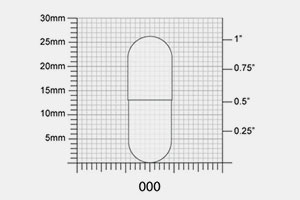 |
| 00 | The double zero capsules are popular and mainly applied for medicinal and nutraceuticals.
It has 23.4mm length with 0.9 ml of holding volume and 8.5 mm of cap’s external diameter. |
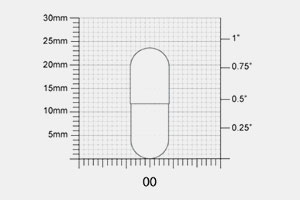 |
| 0 | This is also the popular size and is used for pharmaceuticals, nutraceuticals, and related industries filling purposes.
The single zero capsule is capable of holding light density filling ranges of 305 mg, for medium density, it is noted as 475 mg and 680 mg for heavy-density materials. The length of these capsules is 21.6 mm with 7.64 mm of the cap’s external diameter. |
|
| 1 | These capsules are also used in general medicinal and health related purposes.
It has ability to hold light density materials with approx. 225 mg, medium density filling ranges with 350 mg, and 500 mg of filling can be done with heavy density materials. The length of these capsules is noted as 19.4 mm with an external cap’s diameter of 6.96 mm. |
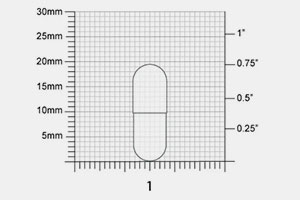 |
| 2 | This type of capsule is mainly used for medicinal purposes, but not for other supplements or herbal medications.
This is small in size around 17.6 mm. It has the capacity to store light density material with a range of 165 mg, 26o mg for medium, and 370 mg with heavy density filling. Besides this, the external cap’s diameter is estimated at 6.39 mm. |
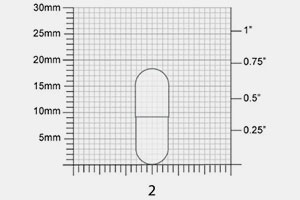 |
| 3 | Indeed, this is the small size capsule with a capacity of holding material with a light density is 135 mg, for medium 210 mg, and the filling with heavy density is recorded as 300 mg.
The following type of capsule is not commonly implemented in general practices. As its length is estimated as 15.7 mm and the external cap’s diameter is noted as 5.85 mm. |
|
| 4 | These are the smallest capsules and are used for specialized purposes. In general practice, this size is generally not referred for routine medications.
It has the property to store light density material with weighs 95 mg, whereas for medium density 145 mg; and 210 mg for heavy density filling. The length of these capsules lies with a range of 14.3 mm and their external cap’s diameter is recorded as 5.33 mm. |
|
| 5 | The smallest standard capsules that have ability to store the filling range with 75 mg to 155 mg of medicines and supplements where 60 mg is for light density materials, 90 mg for medium, and 30 mg is for heavy density filling.
The length of the size 5 capsule is 11.1 mm with 4.91 mm of external cap’s diameter. |
|
Softgel capsules
These are hermetically sealed capsules that are flexible and capable of materials in liquid formulation or in the liquid state, such as oils, supplements, etc. These capsules are available in various sizes and are mainly manufactured from gelatin. The described below chart of the soft gelatin capsule tells the unit ‘Minim’ which means the volume filled is mainly fluid or with semi-solid matrix. Therefore, you can understand it in a way that 1 minim= 1/60 fluid dram or one drop which is equal to 0.616 cc. Similarly, 1 cc = 16 minim.
Size of oval softgel
| Size | Fill in cc | Fill in minim | Picture |
| 2 | 0.092-0.111 | 1.5-1.8 | 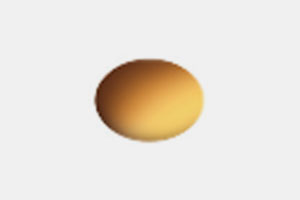 |
| 3 | 0.148-0.185 | 2.4-3.0 | 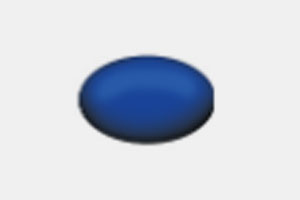 |
| 4 | 0.191-0.246 | 3.1-4.0 | 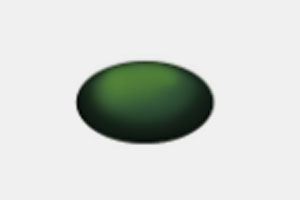 |
| 5 | 0.265-0.308 | 4.3-5 | 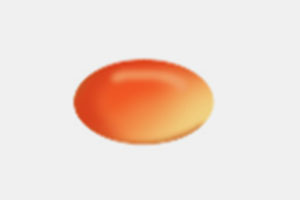 |
| 6 | 0.320-0.370 | 5.2-6 | 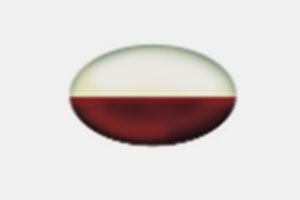 |
| 7.5 | 0.382-0.462 | 6.2-7.5 | 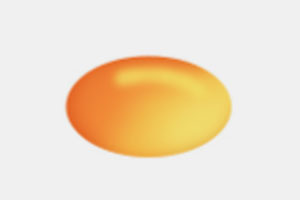 |
| 8.5 | 0.431-0.524 | 7.0-8.5 | 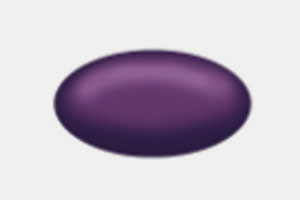 |
| 10 | 0.462-0.616 | 7.5-10.0 | 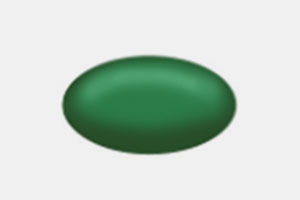 |
| 12 | 0.511-0.739 | 8.3-12.0 | 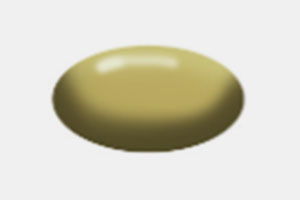 |
| 16 | 0.764-0.986 | 12.4-16.0 | 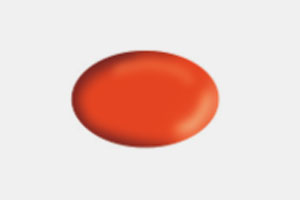 |
| 20 | 1.047-1.232 | 17.0-20.0 | 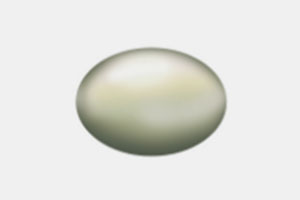 |
| 30 | 1.294-1.848 | 21.0-30.0 | 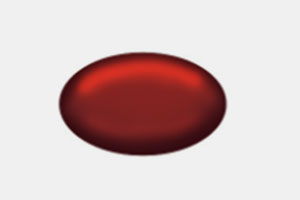 |
Reference for chart- catalent
Size of oblong capsules
| Size | Fill in cc | Fill in minim | Picture |
| 3 | 0.142-0.185 | 2.3-3.0 | 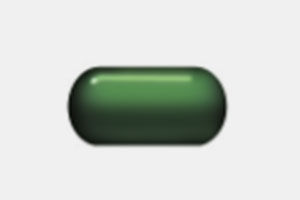 |
| 4 | 0.185-0.246 | 3.0-4.0 | 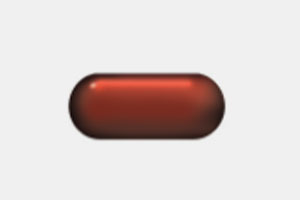 |
| 5 | 0.246-0.308 | 4.0-5.0 | 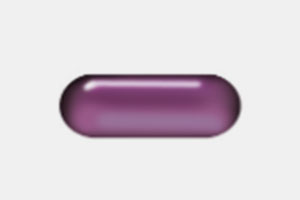 |
| 6 | 0.308-0.370 | 5.0-6.0 | 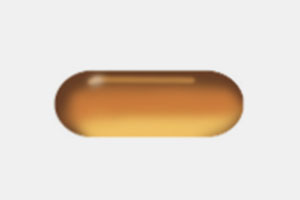 |
| 8 | 0.400-0.493 | 6.5-8.0 | 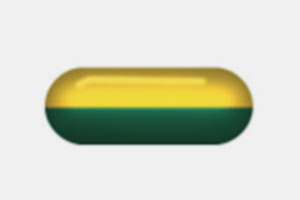 |
| 9.5 | 0.462-0.585 | 7.5-9.5 | 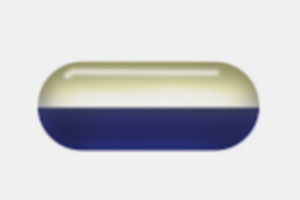 |
| 11 | 0.524-0.678 | 8.5-11.0 | 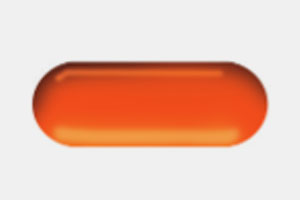 |
| 12 | 0.678-1.010 | 11.0-16.4 | 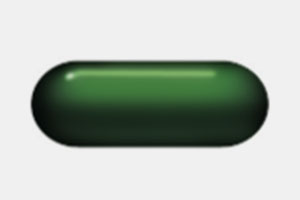 |
| 14 | 0.777-0.862 | 12.5-14.0 | 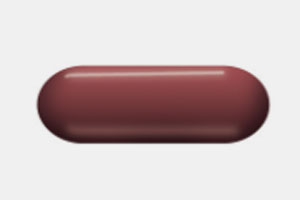 |
| 16 | 0.862-0.986 | 14.0-16.0 | 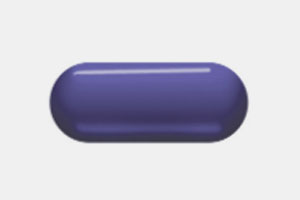 |
| 20 | 0.986-1.232 | 16.0-20.0 | 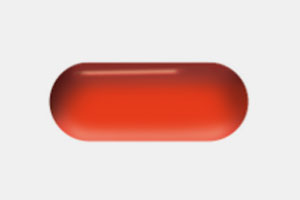 |
| 22 | 1.109-1.355 | 18.0-22.0 | 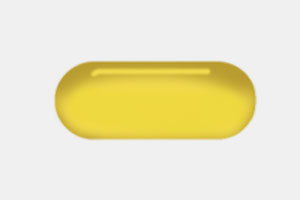 |
Reference for chart- catalent
Size of the round softgel
| Size | Fill in cc | Fill in minim | Picture |
| 1 | 0.046-0.062 | 0.75-1.00 | 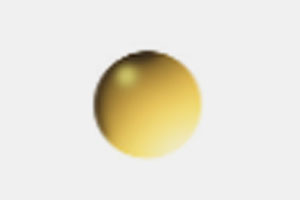 |
| 2 | 0074-0.124 | 1.2-2.0 | 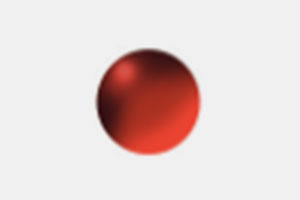 |
| 3 | 0.136-0.185 | 2.2-3.0 | 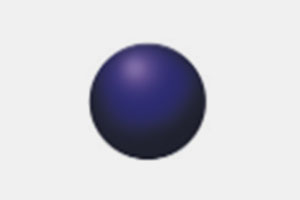 |
| 4 | 0.172-0.246 | 2.8-4.0 | 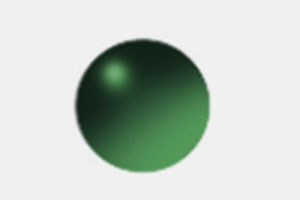 |
| 5 | 0.197-0.308 | 3.2-5.0 | 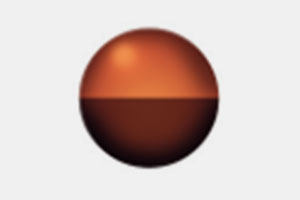 |
| 6 | 0.283-0.370 | 4.6-6.0 | 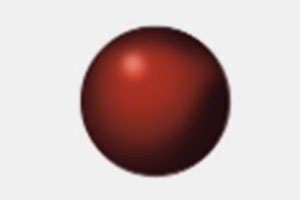 |
| 7 | 0.308-0.431 | 5.0-7.0 | 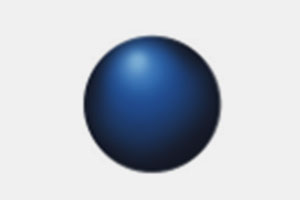 |
| 9 | 0.431-0.554 | 7.0-9.0 | 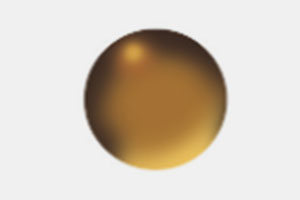 |
| 15 | 0.740-0.925 | 12.0-15.0 | 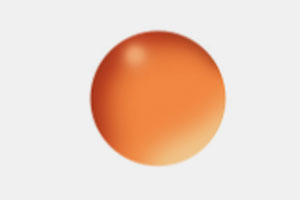 |
| 20 | 0.925-1.230 | 15.0-20.0 | 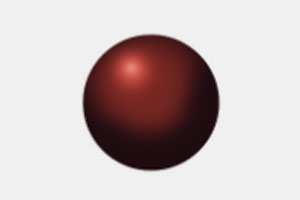 |
| 28 | 1.355-1.848 | 22.0-30.0 | 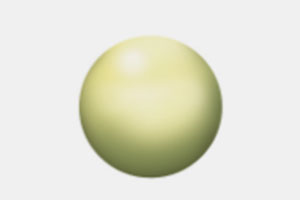 |
| 40 | 1.971-2.526 | 32.0-41.0 | 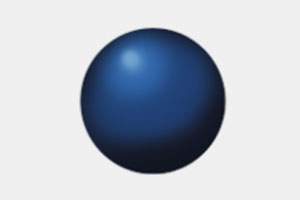 |
Reference for chart- Catalent
Shapes of capsules
The popular and commonly used shapes of capsules are described below:
Cylinder/Oblong shape capsule
Cylinder capsule- Picture courtesy: stable diffusion
This is the standard shape used for capsules. The cylinder formatting is common for both hardgel and sofgel capsules.
Oval shape capsule
Oval shape capsule
The oval capsule shape is mainly seen in softgel capsules which facilitate easy swallowing and these shape capsules are available in various sizes that we already have discussed.
Round shape capsules
Round shape capsules- Picture courtesy: lifevision manufcaturer
Many softgel capsules with a small amount of filling volume are presented with round shape capsules. These are aesthetically pleasant and used for nutraceuticals and the cosmetic industry mainly to dispense supplements and serums.
Customized shape capsules
Customized shape capsules- Picture courtesy: Chemtech international
There are various customized shape softgel capsules manufactured in the companies specially nutraceuticals and cosmetic industry.
For example:
| Star/Sun shape | This is an attractive softgel capsule used for encapsulation of hair-related nutritional supplements, also formulation used for skin care. | 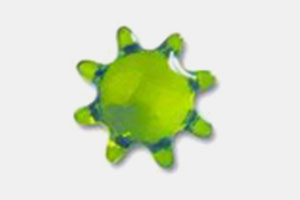 |
| Heart shape
|
The softgel capsule with beautiful manufacturing of heart shape and is mainly used for skin care serums, oils, and nutraceutical or health related supplements. | 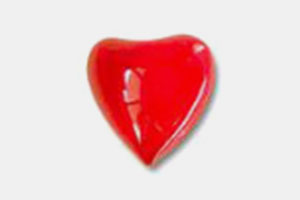 |
| Animal shape | The softgel capsules come with various attractive shapes of animals such as elephant, mouse, tortoise etc, they are mainly used for veterinary, cosmetic, personal care, etc, products. | 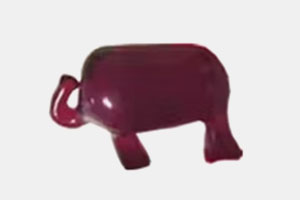 |
| Fish shape | The commonly used softgel capsule shape which is displaying the fish shape. The main used material in this shape includes cod liver oil, fish serum, Omega 3 oils, nutritional supplements, etc. | 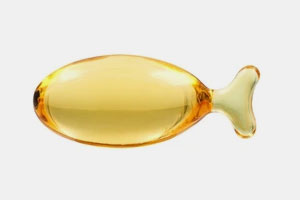 |
4.Why do different sizes and shapes of pills matter to you a lot?
The different sizes and shapes of pills are very important for you. We have mentioned the reasons behind its significance:
Identification of dosage formulation
Atorvastatin with 20 mg and 40 mg- picture courtesy: drugs.com
The various sizes and shapes of pills highlight each medicine with the same genera and brand with different weights or concentrations of active pharmaceutical ingredients (APIs). Hence you can easily identify by the shape or size of the formulation in the case of different concentrations of active. For example, statin 20 mg has a size of 11 mm and 40 mg has a size of 14 mm while both are present in oval shape.
Easy swallowing
Easy swallowing- Picture courtesy: Daily Mail
Research studies and various practical approaches have confirmed that the purpose behind different sizes and shapes of pills is to facilitate easy swallowing from the esophagus.
No error in dispensing the medication
No dispensing error- Picture courtesy: PKF Australia
In pharmacies and hospital setups, the day and night dispensing sometimes causes medication dispensing errors. This is very common if you’re preparing inpatient doses with the same shapes and sizes. In the case of different sizes and shapes of pills makes you alert and ensure easy dispensing, because you can identify the medicines from their shapes and sizes and avoid making faults.
Way more compliant
User compliant- Picture courtesy: UCONE today
Different sizes and shapes of pills ensure an easy dosage administration and make you more confident about your medication or regimen. Even a layman can handle and manage their schedule treatment just by the unique shapes and sizes of the tablet. That’s why, it is considered the most user-compliant and positive approach toward well-being and treating health problems.
Conclusion
After reading the informative blog on ‘Different Sizes and Shapes of Pills: What Do You Know’, you will be able to distinguish the basic knowledge of available sizes and shapes related to pills. Moreover, it is all about a pre-plan objective that allows you to choose the specific shapes or sizes of the pill. If you still have any queries or want to know expert suggestions related to manufacturing different sizes and shapes of pills, do contact our team. Do you know AIPAK is offering you a tremendous, innovative, and affordable range of quality machines required for manufacturing pharmaceutical oral dosage formulations? We would love to hear your queries and provide you with free guidance. To know more, check out our products now.
Don't forget to share this post!
Capsule Filling Machine Related Posts
Capsule Filling Machine Related Products
Capsule Filling Machine Related Videos
CONTACT US
Tell us your raw material and project budget to get quotations within 24 hours.
WhatsApp Us: +86 181 6426 8586

Want the best price & newest pharmaceutical machinery buying guide,tips and trends sent straightly to your box?Sign up for AIPAK’s monthly newsletter,we’re free for your consultation and Offer you the most suitable solutions!
The Buyer's Guide
- Capsule Filling Buyer's Guide
- Blister Packaging Buyer's Guide
- Tablet Counting Buyer's Guide
- Tube Filling Buyer's Guide
- Cartoning Buyer's Guide
- Gummy Making Buyer's Guide
- CO2 Extraction Buyer's Guide
- Empty Capsules Buyer's Guide
- Suppository Filling Buyer's Guide
- Tablet Coating Buyer's Guide
- Tablet Press Buyer's Guide
- Softgel Encapsulation Buyer's Guide
Most Popular
- 7 Importance Of Pharmaceutical Packaging In Different Applications You Must Know
- 6 Advantages You Must Know About Tablet Counting Machine
- 8 Advantages of Blister Packaging You Must Know
- 6 Critical Applications of Automatic Capsule Filling Machine
- 6 Stations You must Know to Improve the Filling Quality of Automatic Capsule Filling Machine
